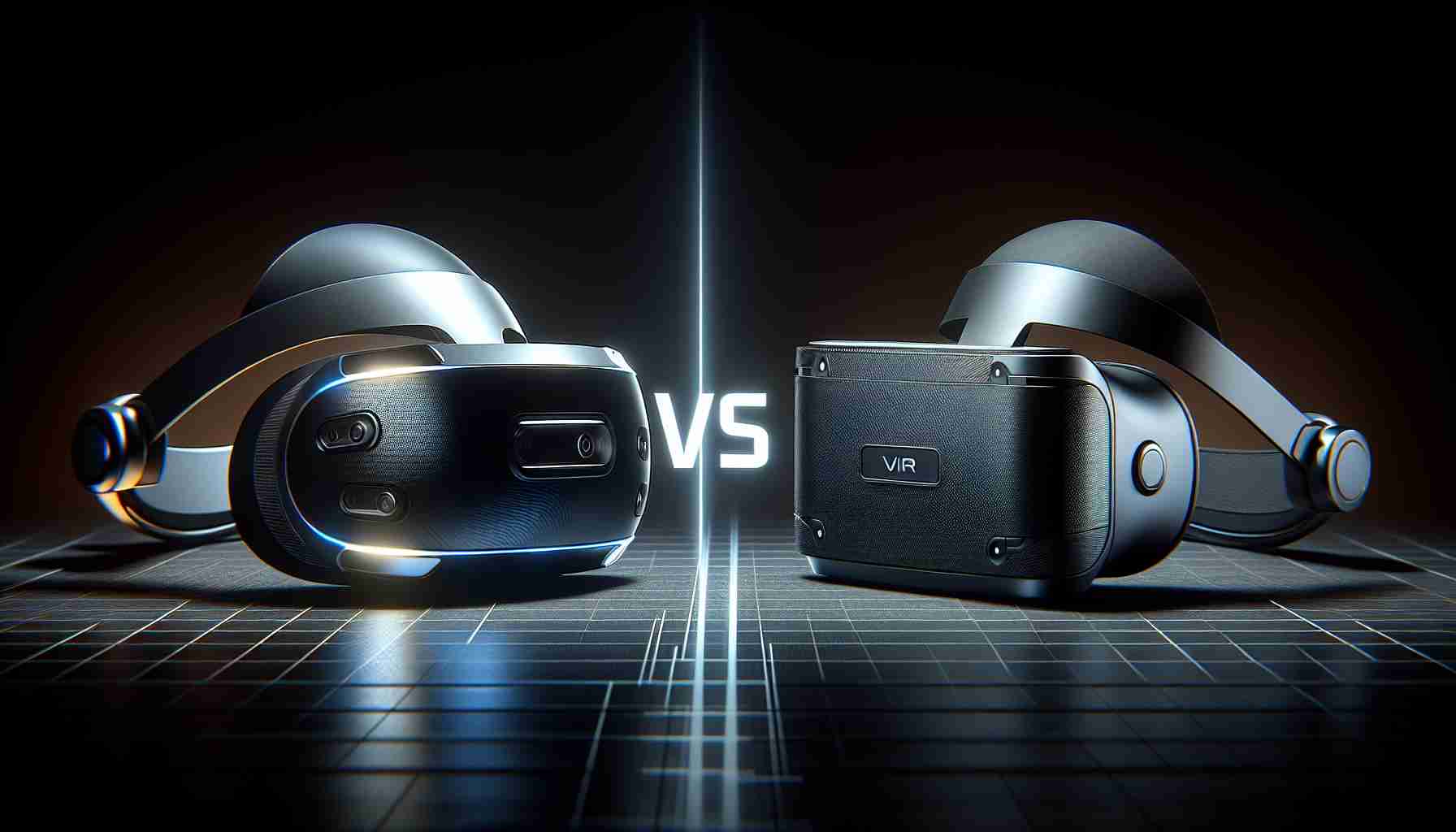The XR hardware market has been buzzing with the recent launch of the Pico 4 Ultra, a mixed reality headset that is giving the Quest 3 a run for its money. Both headsets provide impressive technical features, but let’s take a closer look at the differences.
The Pico 4 Ultra boasts the powerful Snapdragon XR2 Gen 2 chip, just like the Quest 3, but it ups the ante with more RAM and higher resolution pass-through cameras. These enhancements promise a more immersive and visually stunning experience for users. Priced at around $600 in China, the Pico 4 Ultra is expected to have an international launch soon.
Not only does Pico offer an impressive headset option, but they also introduced an exciting new feature called the Pico Motion Tracker. These trackers, which attach to the ankle, provide leg tracking in VR. Using a combination of IMU and optical tracking, the Pico Motion Tracker is compatible with various Pico headsets, including the Pico Neo 3, Pico 4, and Pico 4 Ultra. At a cost of about $55 for a pair, this accessory opens up new possibilities for VR experiences.
In other XR news, Meta has introduced a web gallery feature for Quest headsets. This feature allows users to access, download, and edit their VR-created photos and videos from any device, eliminating the need for a smartphone. It streamlines the process of accessing and sharing VR content, making it more accessible and user-friendly.
Moving beyond hardware and accessories, VR gaming enthusiasts are in for a treat with the upcoming release of Batman: Arkham Shadow. Meta has released a gameplay trailer for this VR adaptation of the beloved Batman game. Exclusive to the Meta Quest 3, this optimized game promises to bring familiar Batman mechanics to life in VR.
The XR market continues to evolve, offering exciting new possibilities and pushing the boundaries of immersive experiences. Whether you’re a fan of VR gaming, interested in advanced headsets, or looking to explore the potential of leg tracking, there’s something for everyone in the world of XR technology. Stay tuned for more updates and innovations in the weeks to come.
Additional facts:
– The Quest 3, developed by Meta (formerly Facebook Reality Labs), is one of the most popular and widely used virtual reality headsets on the market.
– The Pico 4 Ultra is manufactured by Pico Interactive, a Chinese company that specializes in virtual reality and augmented reality products.
– Both the Quest 3 and Pico 4 Ultra offer six degrees of freedom (6DoF) tracking, allowing for more immersive experiences and accurate movement tracking.
– The Pico 4 Ultra features a refresh rate of 90Hz, while the Quest 3 boasts a higher refresh rate of 120Hz, providing smoother visuals.
– The Quest 3 has a larger field of view compared to the Pico 4 Ultra, which can enhance the sense of immersion in virtual worlds.
– The Pico 4 Ultra supports an external SD card for expandable storage, allowing users to store more apps and content on the headset.
– The Quest 3 has a larger library of games and experiences available on the Oculus platform, thanks to its strong developer support and integration with the Oculus store.
Key questions:
1. How does the pricing of the Pico 4 Ultra compare to the Quest 3?
2. What are the specific technical specifications and differences between the Snapdragon XR2 Gen 2 chips in both headsets?
3. How does the leg tracking feature offered by the Pico Motion Tracker compare to other tracking solutions?
4. What are the compatibility requirements for using the Pico Motion Tracker with different Pico headsets?
5. What are the advantages and disadvantages of using the web gallery feature on Quest headsets for accessing and sharing VR content?
6. How does the upcoming game Batman: Arkham Shadow optimize gameplay mechanics for VR on the Quest 3?
7. What are some other notable advancements or innovations in the XR market beyond the Pico 4 Ultra and Quest 3?
Advantages of the Pico 4 Ultra:
– Higher resolution pass-through cameras for enhanced visual quality.
– More RAM, potentially allowing for smoother multitasking and performance.
– The introduction of the Pico Motion Tracker, a novel accessory for leg tracking in VR.
Advantages of the Quest 3:
– Larger library of games and experiences available on the Oculus platform.
– Higher refresh rate of 120Hz for smoother visuals.
– Larger field of view, providing a more immersive experience.
Disadvantages and challenges:
– The international availability and pricing of the Pico 4 Ultra are not specified in the article.
– The compatibility and effectiveness of the Pico Motion Tracker with different Pico headsets may vary.
– The storage capacity of the Quest 3 is not mentioned, raising potential concerns for users with a large collection of VR content.
Related links:
– Oculus
– Pico Interactive


















